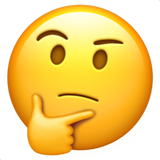Page 9 of 32
Re: Fossils B/C
Posted: November 26th, 2018, 6:14 pm
by UTF-8 U+6211 U+662F
hippo9 wrote:Girlpower05 wrote:In rule 2a it says you may bring the Science Olympiad Official Fossil List, but I constructed a list that had all of the fossils on one page, so am I allowed to use I, or do I have to use the exact list that they provided?
You can have literally any material that fits in your binder so that's fine, but I would bring the official list just in case.
The official list is rather helpful anyway
Re: Fossils B/C
Posted: November 27th, 2018, 3:24 pm
by isotelus
UTF-8 U+6211 U+662F wrote:hippo9 wrote:Girlpower05 wrote:In rule 2a it says you may bring the Science Olympiad Official Fossil List, but I constructed a list that had all of the fossils on one page, so am I allowed to use I, or do I have to use the exact list that they provided?
You can have literally any material that fits in your binder so that's fine, but I would bring the official list just in case.
The official list is rather helpful anyway
You can have anything in your binder. However, bringing the official list is
very useful because you can keep it out of your binder during the competition, unlike anything else in a station event setup (probably the most common version of ID-based events).
Re: Fossils B/C
Posted: December 7th, 2018, 1:16 pm
by venusaur711
UTF-8 U+6211 U+662F wrote:It's finally back!

I see they added lots of fun fossils like sharks and molluscs and three new dinosaur genera. Can't wait to compete in this event!
I can't wait to do it this year!
Re: Fossils B/C
Posted: December 10th, 2018, 2:40 pm
by embokim
Nba2302 wrote:What would be a good way to find the differences of the trilobite?

I love getting trilobites because in my opinion they are free points for ID'ing.
Cryptolithus has the very long lace sweeping structures coming from its frontal lobe.
Eldredgeops has the rough surface on its headshield.
Calymene is almost pointing where its segments get gradually smaller.
Elrathia is a little tricky just because depending on the specimen the tell tale part can be covered, but normally where the long lace sweeping structures would be on Cryptolithus, Elrathia has almost two shorter pointy protrusions coming from the headshield.
Isotelus is pretty easy just because it is pretty symmetrical, it possesses a pretty prominent head and tail shield which pretty much gives it away.
Re: Fossils B/C
Posted: December 10th, 2018, 3:09 pm
by isotelus
embokim wrote:Nba2302 wrote:What would be a good way to find the differences of the trilobite?

I love getting trilobites because in my opinion they are free points for ID'ing.
Cryptolithus has the very long lace sweeping structures coming from its frontal lobe.
Eldredgeops has the rough surface on its headshield.
Calymene is almost pointing where its segments get gradually smaller.
Elrathia is a little tricky just because depending on the specimen the tell tale part can be covered, but normally where the long lace sweeping structures would be on Cryptolithus, Elrathia has almost two shorter pointy protrusions coming from the headshield.
Isotelus is pretty easy just because it is pretty symmetrical, it possesses a pretty prominent head and tail shield which pretty much gives it away.
This is very true. Once you know the trilobites, it becomes fairly easy to ID them.
Textbooks
Posted: December 19th, 2018, 12:16 pm
by jkotl0327
What are the best comprehensive resources (paid or free, textbook or online) that help you learn about the subject? Also, are there any guides on how to properly create a binder?
Thank you.
Re: Textbooks
Posted: December 19th, 2018, 1:23 pm
by UTF-8 U+6211 U+662F
jkotl0327 wrote:What are the best comprehensive resources (paid or free, textbook or online) that help you learn about the subject? Also, are there any guides on how to properly create a binder?
Thank you.
Honestly, I've just been using Wikipedia and digging up anything I can find online. The Audubon field guide is also very nice. For binders, it's nice to make fact sheets for every specimen. You can find some examples of info you need on the scioly wiki.
Re: Fossils B/C
Posted: December 19th, 2018, 4:16 pm
by drakeod
Hey! I'm a freshman doing Science Olympiad for the first time, does anybody have any advice for me? Right now I'm focusing on Fossils, but I'm in 4 different events. Is Wikipedia a good source for Fossils? I know the quality can vary, and not to trust it completely, but is it mostly right?
Re: Fossils B/C
Posted: December 19th, 2018, 4:20 pm
by isotelus
drakeod wrote:Hey! I'm a freshman doing Science Olympiad for the first time, does anybody have any advice for me? Right now I'm focusing on Fossils, but I'm in 4 different events. Is Wikipedia a good source for Fossils? I know the quality can vary, and not to trust it completely, but is it mostly right?
Wikipedia should be good enough (especially since many test writers use wikipedia for questions). If you wanted to, you could cross check temporal ranges just to make sure that they were correct.
Re: Fossils B/C
Posted: December 19th, 2018, 4:24 pm
by drakeod
isotelus wrote:drakeod wrote:Hey! I'm a freshman doing Science Olympiad for the first time, does anybody have any advice for me? Right now I'm focusing on Fossils, but I'm in 4 different events. Is Wikipedia a good source for Fossils? I know the quality can vary, and not to trust it completely, but is it mostly right?
Wikipedia should be good enough (especially since many test writers use wikipedia for questions). If you wanted to, you could cross check temporal ranges just to make sure that they were correct.
Thanks! I've noticed a couple of the fossils have no to very little information, so I'll definitely need to do some more research. Right now I've got a 95 page document (maybe 35 of them have pictures, though, so I'll need to work on that) mostly taken from Wiki.